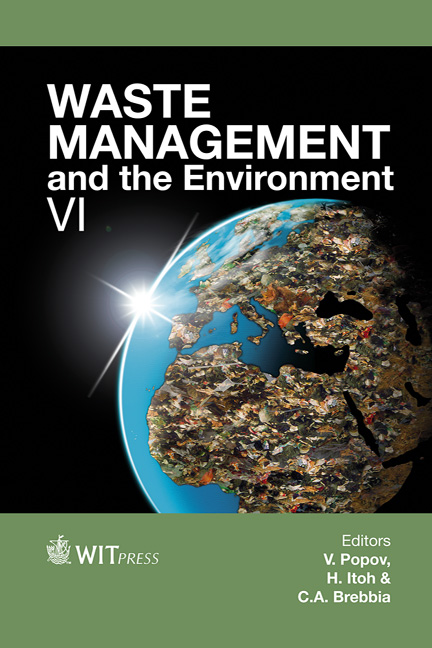A Comparative Study For Energetic Valorisation Of Partially Digested Sewage Sludge
Price
Free (open access)
Transaction
Volume
163
Pages
10
Page Range
103 - 112
Published
2012
Size
375 kb
Paper DOI
10.2495/WM120101
Copyright
WIT Press
Author(s)
A. Alonso-Vicario, A. M. Macarulla-Arenaza, I. Oribe-García & A. Macarulla-Arenaza
Abstract
The common final disposition of the sewage sludge obtained after anaerobic digestion is often use in agricultural soils or as a substitute to fossil fuels in clinker kilns, whose heating value is about a quarter of the coke or peat. In this paper, a comparative study between incineration and gasification with CO2 as oxidant agent has been carried out. After the physical and chemical characterization of the sludge, the combustion and gasification properties have been studied by means of thermogravimetric analysis. According to the combustion profile, while the ignition temperature (200ºC) and peak temperature (288ºC) are of the order of any kind of plant biomass, the maximum combustion velocity is much lower, arround 0.25 mg/min. Moreover, although gasification requires higher temperatures (around 790ºC) for the complete transformation of the organic matter, the resulting gas, with a heating value much higher than that contained in the dried sludge, may be used in the wastewater treatment plant, reducing both the gas natural requirements and the final sludge volume by 37%, and consequently the costs associated with the transport. The final inorganic matter may be also incorporate directly into construction materials, closing the whole loop. Keywords: biomass, waste, sludge, energetic valorisation, co-combustion, gasification.
Keywords
biomass, waste, sludge, energetic valorisation, co-combustion, gasification.





